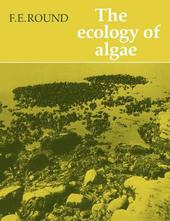
|
The Ecology of Algae
Paperback / softback
Main Details
| Title |
The Ecology of Algae
|
| Authors and Contributors |
By (author) F. E. Round
|
| Physical Properties |
| Format:Paperback / softback | | Pages:664 | | Dimensions(mm): Height 246,Width 189 |
|
| Category/Genre | Cellular biology (cytology) |
|---|
| ISBN/Barcode |
9780521269063
|
| Classifications | Dewey:589.35 589/.35 |
|---|
| Audience | | Tertiary Education (US: College) | |
|---|
| Illustrations |
Worked examples or Exercises
|
|
Publishing Details |
| Publisher |
Cambridge University Press
|
| Imprint |
Cambridge University Press
|
| Publication Date |
8 March 1984 |
| Publication Country |
United Kingdom
|
Description
After an introduction outlining the chemical and physical characteristics of the environment, the book goes on to look at the actual habitats in which algae occur. The communities of the individual habitats such as open water, sediments, rocky shores, coral reefs, hot springs, sea ice, soil, etc., are then discussed with special phenomena highlighted, for example rhythmic activity, nitrogen fixation and buoyancy. There are also chapters on seasonal cycles of algal growth, energy flow, geographical dispersion, palaeo-ecology and contribution to sediments. The importance of algae in symbiotic relationships and their considerable significance to animal grazers in aquatic food chains are also discussed. The final chapter deals with the relationships of algae to eutrophication and pollution of water. This is an important aspect, which can only be understood through an appreciation of algal ecology.
ReviewsReview of the hardback: 'Algae, whether freshwater, terrestrial (soil or aerial) or marine, macro- or micro-, generally get short shrift in ecology books, even if these are liminological or oceanic slant. This volume, therefore, makes an important contribution to the field of ecology. It is an exceptionally well-documented and well-written book, the first to comprehensively combine algae from all habitats ... For those who teach general courses in phycology, this book is strongly recommended as a first-rate reference; for others interested in algae and especially those who study intertidial marine ecology or lake, pond, stream or estuarine ecology, this is one of those books that you probably should not do without.' Quarterly Review of Biology
|